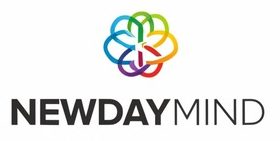Quality control inspection is an essential step for businesses to maintain the desired quality standards of their products or services. This process involves a thorough examination and testing of products at different production stages, aiming to identify and resolve any defects or issues.
Maintaining customer trust, satisfaction, and the overall success of a business requires a robust quality control inspection system. In this guide, we will emphasize the significance of quality control inspection and offer practical advice on implementing AQL (Acceptable Quality Level) standards to bolster your business’s quality control efforts.
Understanding the Importance of AQL Standards in Quality Control
In the modern business world, it is crucial for companies to uphold high standards in order to succeed and maintain a positive reputation. This is where quality control inspection becomes pivotal. It is a vital process that guarantees products or services meet the necessary quality standards, and one effective method of implementation is through the use of AQL (Acceptable Quality Level) standards.
AQL standards have gained widespread recognition and adoption in quality control inspection. These standards offer a well-defined framework for evaluating whether a batch of products or services is acceptable based on predefined criteria. By strictly following AQL standards, businesses can maintain consistent quality levels in their products or services.
Using AQL standards provides a significant advantage by reducing the likelihood of delivering faulty or subpar products to customers. This benefit is particularly crucial for companies that procure their products from international sources, as they often depend on inspection agencies based in countries like China to uphold the quality of their merchandise.
Businesses can enhance their production processes, reduce product recalls, and minimize customer complaints by implementing AQL (Acceptable Quality Level) standards. This not only improves customer satisfaction and loyalty but also enhances the overall reputation and profitability of the business.
Step-by-step Guide to Implementing AQL Standards in Your Business
Integrating AQL standards into your business can greatly improve your quality control inspections. To help you implement these standards smoothly, here is a step-by-step guide that will assist you in seamlessly incorporating AQL standards into your quality control process.
Step 1: Educate your team on AQL standards and their importance.
It’s essential that everyone understands the concept and how it affects their work. Consider providing training sessions or workshops to ensure clarity and comprehension among all team members.
Step 2: Establish your quality standards:
Identify the specific criteria that will be evaluated during inspections. This can involve measurements, functionality, appearance, packaging, or any other factors deemed relevant.
Step 3: Create Sampling Plans
To ensure quality control, it is essential to establish sampling plans. These plans involve inspecting a representative portion of the total batch instead of examining every individual item. The size and frequency of these inspections should be determined based on factors such as the batch size and production capacity.
Step 4: Select a Reliable Inspection Company:
If you source your products from overseas, it is crucial to work with a trusted inspection company in China or other countries. They can perform inspections on your behalf and ensure compliance with AQL standards.
Step 5: Conduct Inspections
Conduct comprehensive inspections throughout the production process to identify any potential issues as early as possible. This involves inspecting raw materials, components, work-in-progress items, and finished products.
Step 6: Document and analyze inspection results
It is important to keep thorough records of the findings from inspections, noting any defects or deviations from the established quality parameters. Regularly analyzing this data will help identify patterns and enable prompt corrective actions when necessary.
Key Benefits of Adopting AQL Standards for Quality Inspection
Implementing AQL (Acceptable Quality Level) standards for quality inspection provides several important advantages for businesses. The foremost benefit is the ability to minimize the risk of delivering defective or substandard products to customers, which is crucial for companies that rely on overseas inspection services in countries like China. By adopting AQL standards, companies can have greater control over their production processes and reduce the chances of facing product recalls or customer complaints.
Improving customer satisfaction and fostering loyalty is another noteworthy advantage. When products consistently meet customers’ expectations in terms of quality, it builds trust in the brand, leading to repeat purchases and increased customer retention. Positive word-of-mouth follows suit, ultimately bolstering the overall reputation and profitability of the business.
Furthermore, implementing Acceptable Quality Limit (AQL) standards aids companies in promptly identifying any possible issues or deviations from quality parameters. This enables timely corrective actions to be taken, minimizing disruptions to production schedules and reducing costs linked to rework or scrap.
In addition, AQL standards offer a dependable framework for evaluating the acceptability of product or service batches. By ensuring consistent quality control inspections, businesses can establish and achieve precise quality standards, resulting in enhanced supplier partnerships and more efficient production processes.
In conclusion, incorporating AQL standards for quality inspection equips businesses with the essential resources to maintain uniform product quality, mitigate risks, enhance customer satisfaction, and bolster their overall reputation and profitability. By integrating these benchmarks into their operations, businesses can stay ahead of competitors and attain enduring success in the long run.
Potential Challenges and Solutions in Implementing AQL Standards
Incorporating Acceptable Quality Limit (AQL) standards into your company’s quality control inspection process can greatly improve the outcome. However, it’s essential to acknowledge and address the challenges that may arise along the way. By being prepared with solutions, you can successfully overcome these obstacles and maximize the benefits of implementing AQL standards in your business’s operations.
- One challenge you might encounter is resistance or a lack of comprehension from your team. Certain employees may resist change or not fully grasp the significance of implementing AQL standards. To overcome this, it’s essential to educate your team about the advantages of AQL standards and their impact on the overall quality of products or services.
- Setting up accurate and dependable sampling plans can pose a challenge. It becomes even more complex when dealing with large or diverse batches, as determining the right sample size and inspection frequency can be tricky. To tackle this, seeking advice from industry experts or partnering with a reputable inspection company that offers guidance in implementing effective sampling plans is crucial.
- Maintaining consistent communication and coordination with your overseas inspection company can be challenging. To overcome this, it’s crucial to establish clear communication channels, set expectations, and regularly review the inspection reports to address any issues or concerns that may arise.
- Finally, the key challenge lies in maintaining discipline and commitment towards consistently improving your quality control processes. It’s common to become complacent or overlook areas that need attention. To overcome this hurdle, it is crucial to prioritize regular analysis of inspection data, identify any recurring patterns or trends, and proactively address them with appropriate measures.
To successfully implement AQL standards in your business’s quality control inspection process and ensure consistent quality in your products or services, it is important to anticipate and address potential challenges. By proactively recognizing these challenges and developing effective strategies, you can ensure smooth implementation of AQL standards.
Future Trends in Quality Control and Role of AQL Standards
- As technology and data analysis continue to advance, AQL standards are expected to play an even larger role in quality control inspection. Businesses will have access to more sophisticated tools that allow for better assessment and maintenance of quality. With these tools, businesses can establish more precise quality parameters and identify the smallest variations from these standards.
- Moreover, businesses will prioritize proactive quality control instead of reactive approaches. Rather than solely focusing on identifying and fixing defects, they will aim to prevent defects from arising altogether. This will involve implementing more stringent quality control processes and conducting comprehensive inspections at every stage of production.
- An upcoming trend is the incorporation of automation and artificial intelligence into quality control inspections. This advancement will simplify the inspection process, minimize human mistakes, and enhance overall efficiency. Companies can depend on advanced algorithms and machine learning to analyze inspection data and make well-informed choices.
- The future of quality control inspection appears promising and optimistic. By adopting AQL standards and staying updated on the latest trends and advancements, businesses can ensure that their quality control practices are effective and aligned with industry norms. The implementation of AQL standards will remain crucial in maintaining the success and reputation of businesses in the years ahead.
Wrapping Up
In conclusion, the implementation of AQL standards is crucial for maintaining consistent product quality and ensuring the success of your business. By following the comprehensive guide provided, you can seamlessly integrate AQL standards into your quality control process and achieve the desired level of quality in your products or services.


